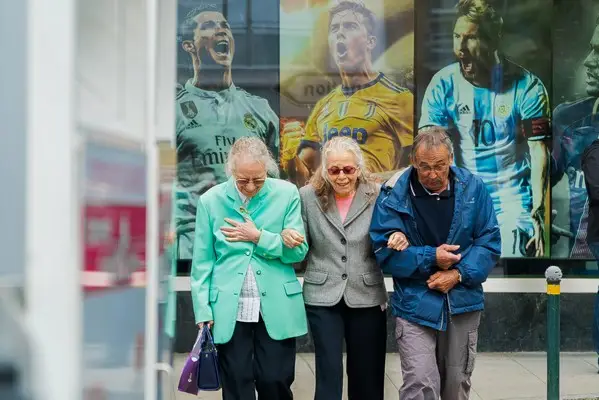Table of Contents
- The Sociological Lens on Introspection
- Introspection and Identity Formation
- Introspection and Social Change
- Challenges and Critiques of Introspection
- Fostering Sociological Introspection
- Conclusion
Introspection, the process of examining one’s own thoughts, emotions, and behaviors, holds a unique place in the field of sociology. While it is often seen as a deeply personal act, introspection is, in fact, deeply connected to societal structures, cultural norms, and collective experiences. In this article, we explore the sociological dimensions of introspection, its role in understanding individual and collective identity, and how it contributes to broader social processes.
The Sociological Lens on Introspection
When we think of introspection, we often associate it with psychology—an individual’s journey into their own mind. However, sociology provides a different perspective by situating introspection within the social world. From a sociological standpoint, introspection is not an isolated act; it is shaped by external forces such as social norms, cultural values, and institutional influences.
Introspection as a Socially Constructed Process
The way individuals engage in introspection varies across cultures and historical periods. For example, in Western societies, where individualism is emphasized, introspection often involves self-analysis aimed at personal growth or fulfillment. In contrast, in collectivist societies, introspection may focus more on one’s role within the group and the maintenance of social harmony.
This variability highlights the socially constructed nature of introspection. The questions we ask ourselves, the frameworks we use to interpret our inner worlds, and even the act of reflecting itself are influenced by societal norms. For instance, the modern emphasis on mindfulness and self-care reflects broader cultural shifts towards individual well-being in a neoliberal context.
Moreover, technological advancements and changing cultural landscapes have further shaped introspection. In the digital age, apps and platforms designed for self-reflection are popular tools for engaging in introspection. However, these tools often come with embedded cultural assumptions and priorities that reflect larger societal trends, such as the pursuit of productivity or the commodification of personal well-being.
The Role of Socialization
Socialization plays a critical role in shaping how we introspect. From childhood, individuals are taught to interpret their emotions, behaviors, and experiences in ways that align with societal expectations. Gender norms, for example, often dictate how men and women reflect on their emotions. Men may be socialized to suppress introspection regarding vulnerability, while women may be encouraged to engage deeply with their feelings.
Moreover, social institutions such as schools, religious organizations, and workplaces further influence introspective practices. These institutions provide frameworks for understanding oneself, often aligning with their broader goals—be it moral development, spiritual growth, or professional success.
For example, religious rituals often encourage introspection as a form of spiritual growth, while educational institutions may frame introspection as a tool for personal and academic development. Workplaces, on the other hand, might promote introspection through performance reviews or personal development plans, embedding it within the context of professional achievement.
Introspection and Identity Formation
One of the most significant sociological contributions of introspection lies in its role in identity formation. Through introspection, individuals construct, deconstruct, and reconstruct their sense of self, often in response to their social environments.
The Self in Society
George Herbert Mead’s concept of the “self” offers valuable insights into the relationship between introspection and identity. According to Mead, the self emerges from social interaction and is composed of the “I” and the “Me.” The “I” represents the spontaneous, individual aspect of the self, while the “Me” reflects the internalized attitudes of the generalized other—the societal norms and expectations we internalize.
Introspection often involves a dialogue between the “I” and the “Me.” When individuals reflect on their actions or decisions, they consider both their unique desires and the societal standards that shape their behavior. This process not only helps individuals understand themselves but also reinforces or challenges societal norms.
Identity in a Globalized World
In a globalized world, introspection takes on new dimensions. Individuals are increasingly exposed to diverse cultural influences, which can lead to complex identity negotiations. For instance, immigrants and members of diasporic communities may engage in introspection to reconcile their cultural heritage with the dominant culture of their host societies.
Similarly, the rise of social media has transformed introspection into a more public process. Platforms like Instagram and Twitter encourage individuals to share their reflections, often blurring the lines between private introspection and public performance. This shift raises important questions about authenticity, self-presentation, and the commodification of introspective practices.
The digital realm also introduces new challenges, such as the pressure to conform to curated narratives of self-reflection that are more about performance than genuine self-awareness. These dynamics highlight the tension between introspection as a private, personal activity and its potential as a public, performative act.
Introspection and Social Change
While introspection is often seen as a personal act, it can also serve as a catalyst for social change. By reflecting on their experiences and positionalities, individuals can develop a critical consciousness that challenges existing power structures and fosters collective action.
Critical Introspection
The concept of critical introspection involves examining one’s own beliefs, behaviors, and privileges in the context of broader social inequalities. For example, individuals in positions of privilege may use introspection to understand how their actions contribute to systemic oppression, such as racism, sexism, or classism. This awareness can inspire efforts to create a more equitable society.
Critical introspection also encourages individuals to question societal norms that perpetuate inequality. By reflecting on the values and assumptions they have internalized, individuals can begin to identify and challenge the mechanisms of social control that maintain the status quo. This process is essential for fostering a more just and inclusive society.
Collective Introspection in Social Movements
Social movements often involve collective forms of introspection, where groups reflect on their shared experiences and goals. The feminist movement, for instance, has historically encouraged women to engage in consciousness-raising sessions—a form of collective introspection aimed at identifying and challenging patriarchal norms.
Similarly, movements like Black Lives Matter and climate justice initiatives rely on collective introspection to build solidarity and envision transformative change. These movements demonstrate how introspection can extend beyond the individual to become a powerful tool for collective empowerment.
Collective introspection also serves as a mechanism for bridging diverse perspectives within social movements. By creating spaces where individuals can share their reflections and listen to others, movements can foster understanding, solidarity, and a shared vision for change.
Challenges and Critiques of Introspection
Get the full article AD FREE. Join now for full access to all premium articles.
View Plans & Subscribe Already a member? Log in.





